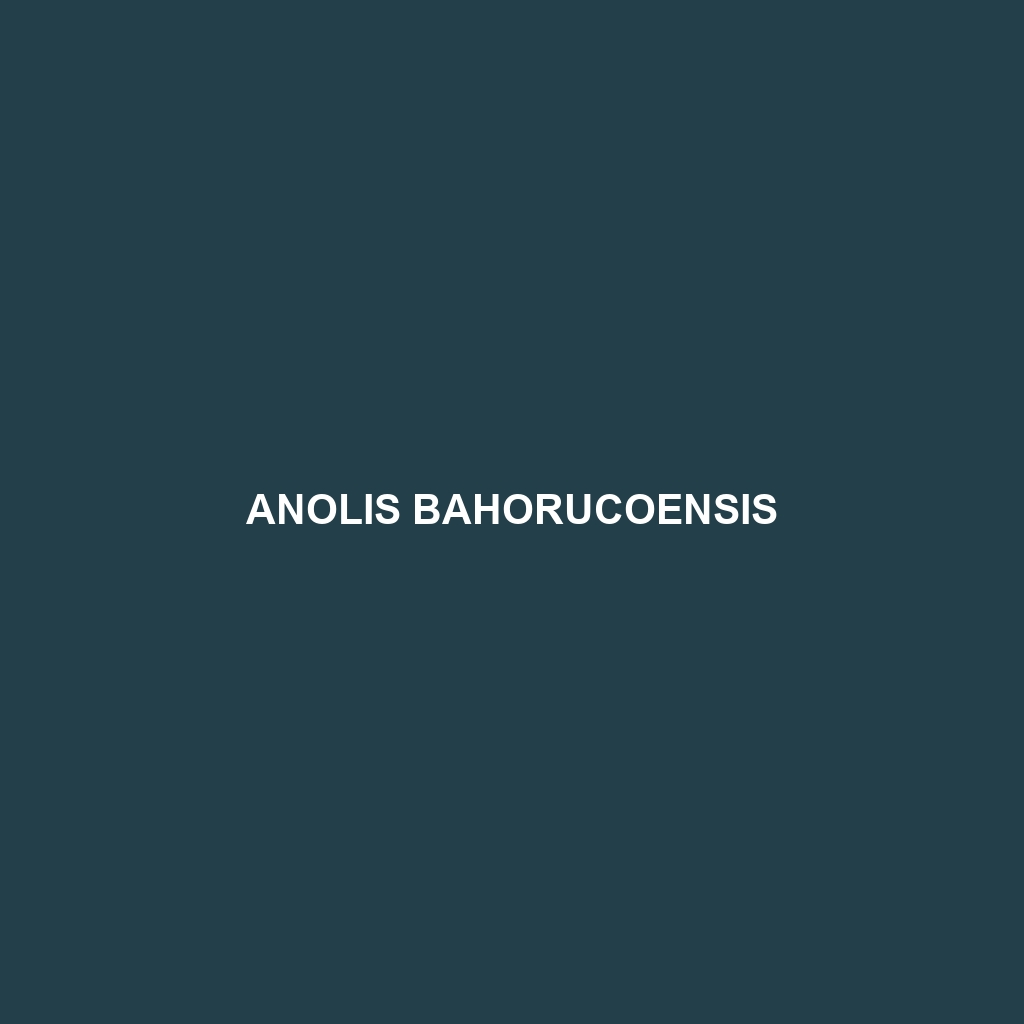Anolis bahorucoensis: A Comprehensive Species Description
Common Name: Anolis bahorucoensis
Scientific Name: Anolis bahorucoensis
Habitat
Anolis bahorucoensis is primarily found in the mountainous regions of the Bahoruco range in the Dominican Republic. This species thrives in cloud forests and humid subtropical forests, where it prefers to inhabit tree trunks and branches at varying heights, often within areas of dense foliage that provide both cover and hunting grounds.
Physical Characteristics
This particular anole species exhibits a size range of approximately 8 to 12 centimeters in total length. Anolis bahorucoensis is characterized by its vibrant green coloration, which can vary in intensity depending on environmental conditions. Its slender body and elongated limbs enable it to navigate through the complex vertical structures of its arboreal habitat. Notably, mature males display a distinctive throat flap, or dewlap, which is typically bright orange-yellow, used for communication and territorial displays.
Behavior
Anolis bahorucoensis is known for its active diurnal behavior, engaging in both foraging and mating rituals during daylight hours. The species exhibits a unique territorial behavior, with males often seen establishing and defending their territory through visual displays and vigorous posturing. These lizards are adept climbers, using their specialized toe pads to scale smooth surfaces in pursuit of insects and other prey.
Diet
Anolis bahorucoensis primarily subsists on a diet of small insects and arthropods. Common food sources include ants, beetles, and small caterpillars, which they hunt with agility and precision. This insectivorous diet allows them to play a crucial role in controlling insect populations within their habitat.
Reproduction
The reproductive habits of Anolis bahorucoensis involve distinct mating seasons, typically occurring during the warmer months from May to August. Females lay clutches of 1-2 eggs in sheltered locations, ensuring protection from predators. After a period of incubation lasting about 6 to 8 weeks, hatchlings emerge, showcasing fully developed adult coloration and features.
Conservation Status
Currently, Anolis bahorucoensis is classified as vulnerable due to habitat loss and environmental degradation, primarily caused by deforestation and agricultural expansion. Conservation efforts are critical to preserving this unique anole and its habitat.
Interesting Facts
One fascinating aspect of Anolis bahorucoensis is its remarkable ability to change colors based on environmental conditions and social interactions. This adaptability not only helps with camouflage but also serves as a communication mechanism among individuals in their territory.
Role in Ecosystem
Anolis bahorucoensis plays a significant role in its ecosystem as both a predator and prey. By feeding on insects, it helps to maintain ecological balance, while also serving as a food source for larger predators. Its interactions with plant life, particularly in pollination and seed dispersal, further highlight its importance in sustaining biodiversity within the cloud forests of the Dominican Republic.

